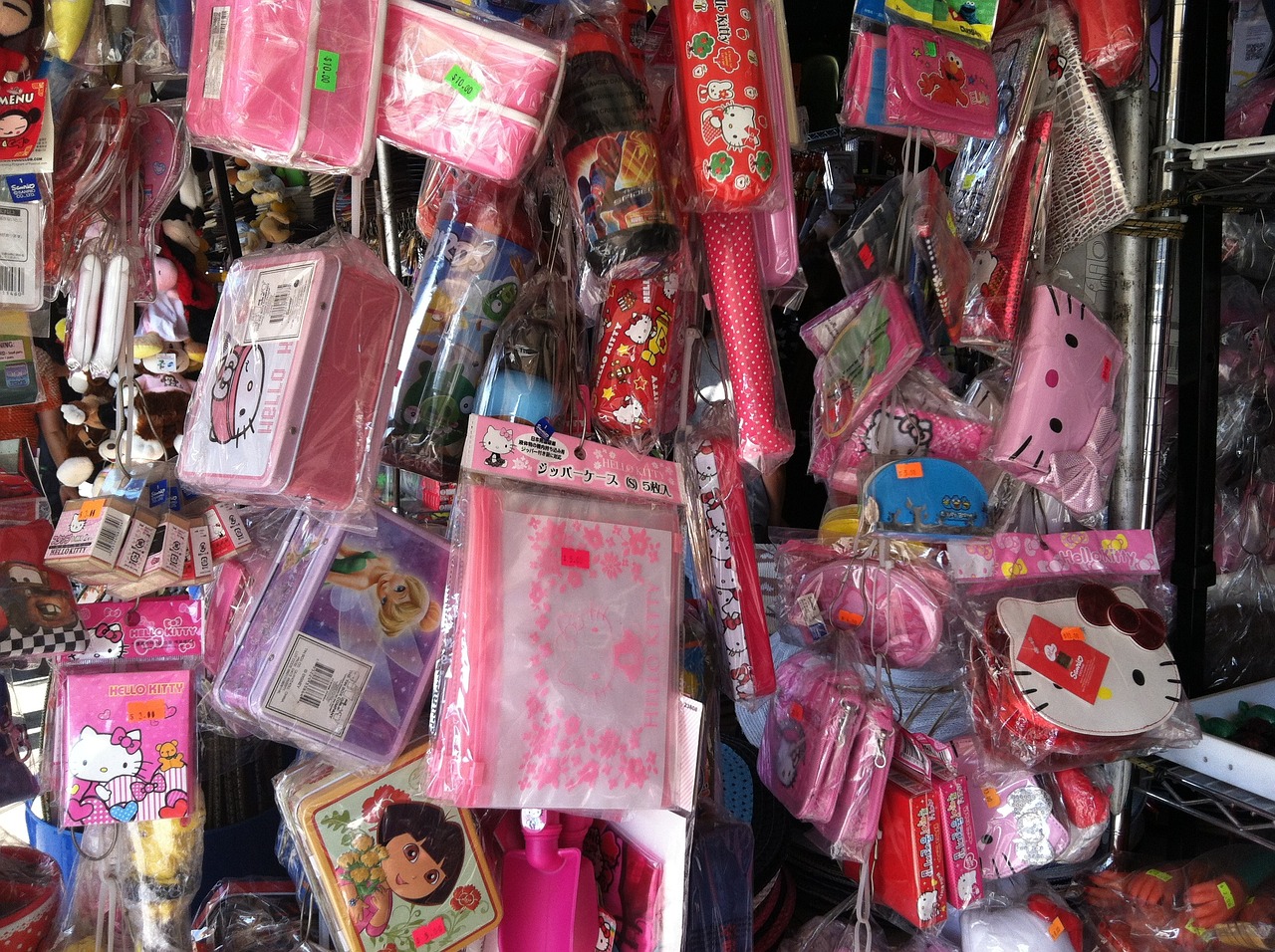Hello Kitty Franchise : 5 Exclusive Opportunities

Welcome to the enchanting world of the Hello Kitty Franchise, a global phenomenon that has captured the hearts of millions. From its humble beginnings to becoming a cultural icon, this article delves into the origins, evolution, and impact of Hello Kitty. Join us on a journey through the adorable realm of Hello Kitty as we explore its history, business strategies, collaborations, fan community, and more. Discover why Hello Kitty is more than just a character – it’s a cultural phenomenon that continues to leave an indelible mark worldwide.
Introduction to Hello Kitty Franchise

Hello Kitty, a beloved character with a global fanbase, serves as the centerpiece of an expansive franchise that extends far beyond a cute face. Launched in 1974 by the Japanese company Sanrio, Hello Kitty started as a simple yet endearing character designed by Yuko Shimizu. Originally aimed at young girls, Hello Kitty quickly transcended demographics, captivating audiences of all ages.
The character’s distinctive design, characterized by a lack of a mouth and a bow perched atop her head, has become synonymous with kawaii, the Japanese culture of cuteness. Over the years, Hello Kitty has evolved into a symbol of innocence, friendship, and happiness.
The franchise has seen remarkable growth, expanding into a diverse range of products and experiences. From stationery and toys to fashion, home décor, and even themed cafes, Hello Kitty has established a pervasive presence in the consumer market. The character’s image adorns a multitude of merchandise, making it a ubiquitous and instantly recognizable brand.
History and Origins of Hello Kitty
Hello Kitty’s origins trace back to 1974 when Sanrio, a Japanese company specializing in kawaii (cute) characters, introduced this iconic feline to the world. The character’s creation is credited to Yuko Shimizu, a designer who crafted Hello Kitty with simplicity and charm in mind.
Originally intended as a design for a coin purse, Hello Kitty’s immediate popularity prompted Sanrio to expand her presence across various products. The character’s lack of a mouth, a deliberate design choice, allows people to project their emotions onto her, making her a relatable and universally appealing figure.
The debut of Hello Kitty coincided with the rise of kawaii culture in Japan, a cultural shift towards embracing and celebrating all things cute. Hello Kitty became a symbol of this movement, embodying the essence of innocence and charm that captivated audiences.
Over the years, Hello Kitty underwent subtle changes in design, but her core characteristics remained constant. The character’s widespread appeal led to her international recognition, and Sanrio strategically marketed Hello Kitty as a global ambassador of cuteness.
Evolution of Hello Kitty Products and Merchandise
From a simple coin purse design to a vast array of products, the Hello Kitty franchise has witnessed a remarkable evolution in its merchandise. The character’s initial success paved the way for a diverse range of Hello Kitty-themed items that transcend traditional boundaries.
Sanrio’s strategic licensing and collaboration efforts propelled Hello Kitty into various industries. The expansion began with stationery and accessories, where Hello Kitty’s image adorned items like pens, notebooks, and backpacks. The character’s universal appeal among children and adults alike ensured the success of these products.
As the franchise gained momentum, Hello Kitty’s presence extended into the realms of fashion and apparel. From clothing lines to accessories and even footwear, Hello Kitty became a fashion statement, with enthusiasts proudly displaying their affection for the character.
The Hello Kitty phenomenon didn’t stop there; it transcended into the world of home decor. Hello Kitty-themed household items, furniture, and even appliances became sought-after commodities, turning homes into adorable expressions of fandom.
The evolution continued with Hello Kitty-themed cafes and restaurants, providing fans with immersive experiences. The character’s image graced food, beverages, and decor, creating a unique and enchanting atmosphere for patrons.
Global Popularity and Cultural Impact of Hello Kitty
Hello Kitty’s appeal transcends geographical borders, making her a global cultural phenomenon. The character’s journey from a Japanese creation to an international icon is a testament to the universality of her charm.
Initially targeting a primarily Japanese audience, Hello Kitty quickly gained popularity beyond national boundaries. The character’s lack of a specific cultural identity contributed to her global allure, allowing people from diverse backgrounds to embrace and connect with her.
Hello Kitty’s success in the United States played a pivotal role in establishing her as a worldwide sensation. Introduced to the American market in the late 1970s, Hello Kitty’s cuteness and simplicity resonated with consumers, leading to a surge in popularity. Soon, the character became a staple in Western popular culture, appearing on a wide range of products and capturing the hearts of a new audience.
Over the years, Hello Kitty has become a symbol of cross-cultural exchange, with fans from Asia to the Americas, Europe, and beyond. The character’s image is not limited to merchandise; it has infiltrated art, fashion, and even social media, making Hello Kitty a global pop culture icon.
Business Strategy and Marketing Tactics of Hello Kitty Franchise

The success of the Hello Kitty Franchise is not merely a result of chance; it stems from a carefully crafted business strategy and innovative marketing tactics employed by Sanrio. From the outset, Sanrio recognized the potential of Hello Kitty as more than just a character; it could be a cultural phenomenon and a lucrative brand.
One key aspect of the business strategy was the deliberate decision to keep Hello Kitty’s design simple and universally appealing. By forgoing a mouth and emphasizing basic features, the character became a blank canvas onto which consumers could project their emotions and interpretations, fostering a deeper connection.
Sanrio’s licensing strategy played a crucial role in the widespread dissemination of Hello Kitty products. Instead of confining the character to specific industries, Sanrio embraced diverse collaborations, allowing Hello Kitty to venture into fashion, home decor, and even food and beverage. This approach ensured that Hello Kitty’s presence was not limited to a particular demographic, broadening her appeal across age groups and interests.
Strategic partnerships with prominent brands and designers further elevated Hello Kitty’s status. Limited-edition collaborations generated buzz and demand, turning Hello Kitty into a coveted and collectible brand. The careful curation of collaborations maintained the character’s exclusivity while continually reinventing her image.
Marketing tactics focused on emotional connections, emphasizing the character’s values of friendship, happiness, and innocence. Sanrio actively engaged with fans through events, social media, and immersive experiences, fostering a sense of community among Hello Kitty enthusiasts.
Collaborations and Partnerships within the Hello Kitty Brand

A hallmark of the Hello Kitty Franchise is its extensive array of collaborations and partnerships that have expanded the character’s presence into various industries. Sanrio’s strategic alliances with brands, designers, and artists have not only kept Hello Kitty relevant but also elevated her status as a pop culture icon.
From high-end fashion houses to everyday consumer brands, Hello Kitty has ventured into collaborations that span a diverse spectrum. Designers such as Karl Lagerfeld, Puma, and Loungefly have lent their creativity to create limited-edition Hello Kitty collections, blending the character’s charm with high fashion.
Beyond fashion, Hello Kitty has made inroads into the world of cosmetics, teaming up with renowned beauty brands to offer makeup and skincare lines. These collaborations capitalize on Hello Kitty’s aesthetic, transforming everyday products into collectibles coveted by fans and beauty enthusiasts alike.
The collaboration phenomenon extends to unexpected realms, including technology and gaming. Hello Kitty-themed gadgets, accessories, and even video games have been developed in partnership with leading tech companies, showcasing the character’s versatility and adaptability.
Collaborations have not only expanded the product range but also provided fans with unique and exclusive experiences. Hello Kitty-themed cafes, pop-up stores, and events bring the character to life in immersive ways, creating a sense of excitement and anticipation among the fan community.
Conclusion
In conclusion, the Hello Kitty Franchise stands as a testament to the enduring power of simplicity, charm, and strategic innovation.
From its humble beginnings in 1974 to becoming a global cultural phenomenon, Hello Kitty’s journey is a captivating exploration of how a character transcends boundaries and captures the hearts of millions.
The franchise’s evolution, marked by a diverse range of merchandise, global popularity, and strategic collaborations, showcases the adaptability and timelessness of Hello Kitty.
Sanrio’s astute business strategies and marketing tactics, coupled with the character’s ability to foster emotional connections, have propelled Hello Kitty beyond the realms of mere merchandising into a beloved icon with a lasting legacy.
As Hello Kitty continues to enchant new generations and explore new frontiers, the franchise remains a delightful and enduring symbol of innocence, friendship, and the universal appeal of all things cute.
FAQs – Hello Kitty Franchise
- What is the Hello Kitty Franchise?
- The Hello Kitty Franchise is a globally recognized brand centered around the iconic character Hello Kitty, created by Sanrio in 1974. It encompasses a diverse range of products, collaborations, and experiences that extend beyond traditional merchandise.
- Who created Hello Kitty, and what was the inspiration behind it?
- Hello Kitty was created by designer Yuko Shimizu for the Japanese company Sanrio. The character’s design was rooted in simplicity and charm, with the lack of a specific cultural identity, allowing for broad global appeal.
- How has Hello Kitty merchandise evolved over the years?
- Hello Kitty merchandise has evolved from its initial focus on stationery to a vast array of products, including fashion, home decor, and themed cafes. The character’s image adorns everything from clothing and accessories to household items and even technology.
- What is the global impact of Hello Kitty?
- Hello Kitty has become a global cultural phenomenon, transcending geographical and cultural boundaries. The character’s universal appeal has led to widespread popularity in various regions, making Hello Kitty a symbol recognized and adored worldwide.
- What business strategies contributed to Hello Kitty’s success?
- Sanrio employed strategic business tactics, including a deliberate design emphasizing simplicity, extensive licensing, and collaborations with diverse brands and designers. These strategies broadened Hello Kitty’s appeal and established her as a versatile and timeless brand.
- How has Hello Kitty engaged with fans beyond merchandise?
- Hello Kitty has actively engaged with fans through events, social media, and immersive experiences. Collaborations with brands, designers, and artists have not only expanded the product range but also provided fans with unique and exclusive opportunities to connect with the character.
- What role do collaborations play in the Hello Kitty Franchise?
- Collaborations are integral to the Hello Kitty Franchise, extending the character’s presence into various industries. From high-end fashion to beauty, technology, and immersive experiences, collaborations have kept Hello Kitty relevant, exclusive, and continually evolving.
- Why is Hello Kitty considered a cultural icon?
- Hello Kitty is considered a cultural icon due to her universal appeal, simplicity, and adaptability. The character’s image has permeated various aspects of popular culture, including fashion, art, and everyday life, making her a timeless symbol of cuteness and innocence.
- What is the significance of Hello Kitty’s lack of a mouth in her design?
- Hello Kitty’s lack of a mouth is a deliberate design choice to allow people to project their emotions onto the character. This feature enhances Hello Kitty’s relatability and makes her expressions open to interpretation, contributing to her widespread appeal.
- What does the future hold for the Hello Kitty Franchise?
- The Hello Kitty Franchise continues to evolve with new collaborations, products, and experiences. As it explores new frontiers, Hello Kitty remains a beloved and enduring symbol, captivating generations with its timeless charm and cultural significance.


